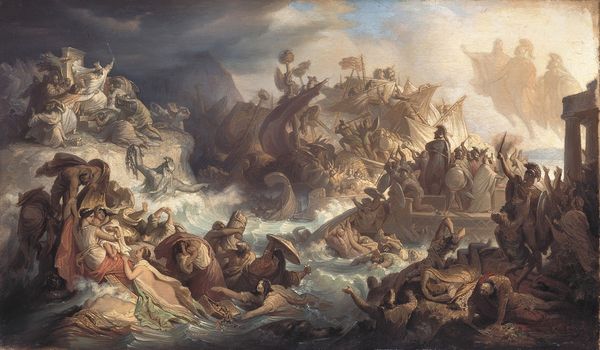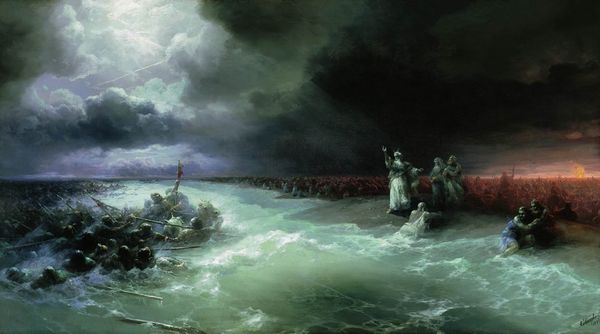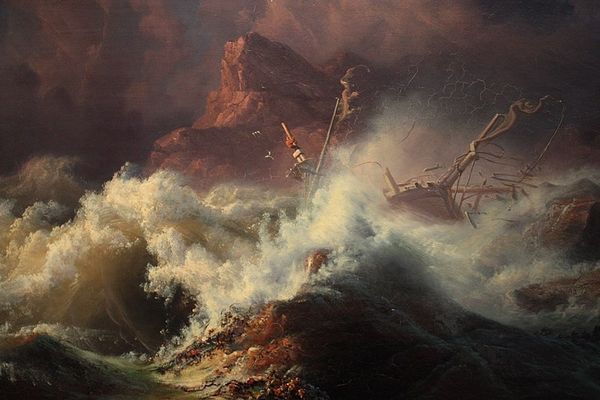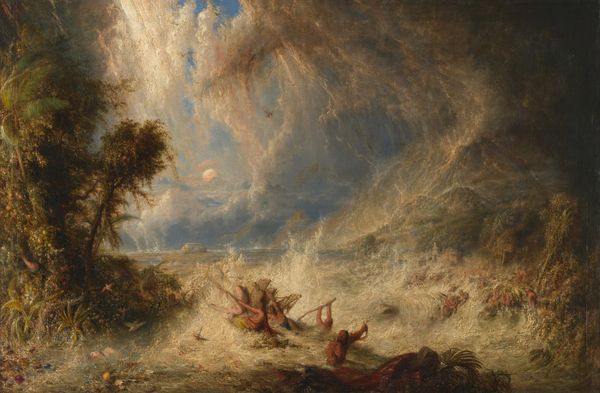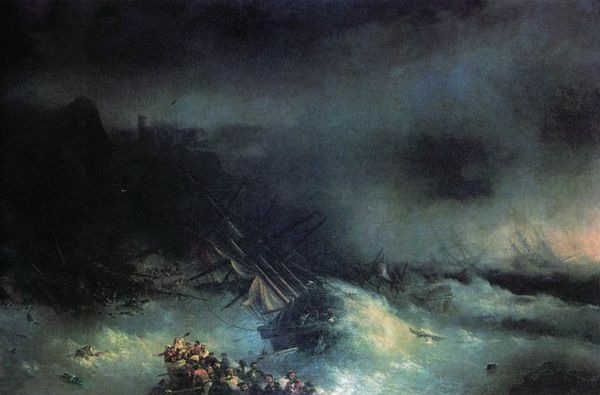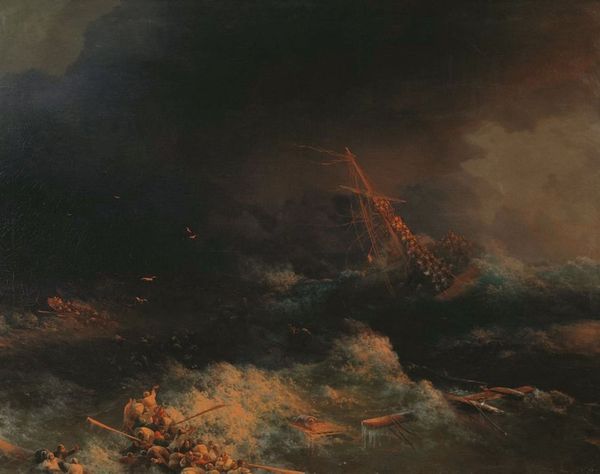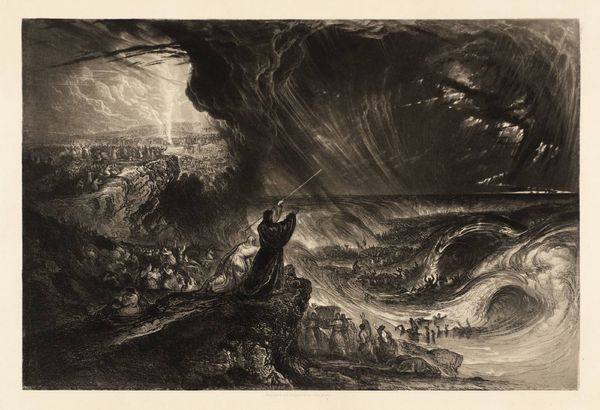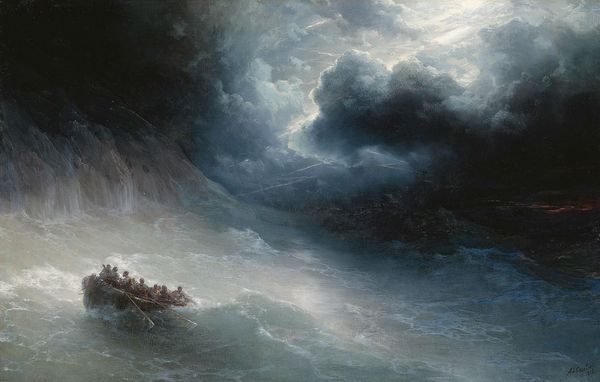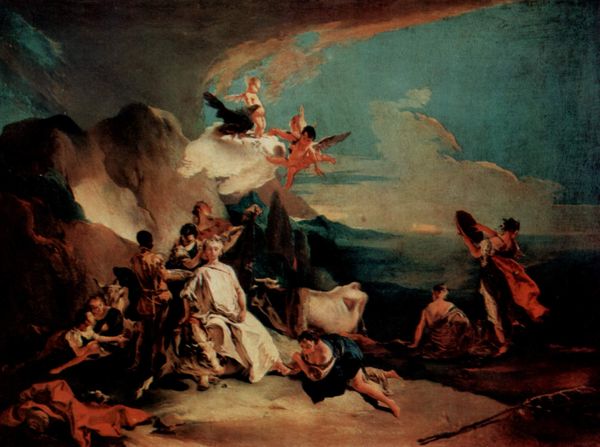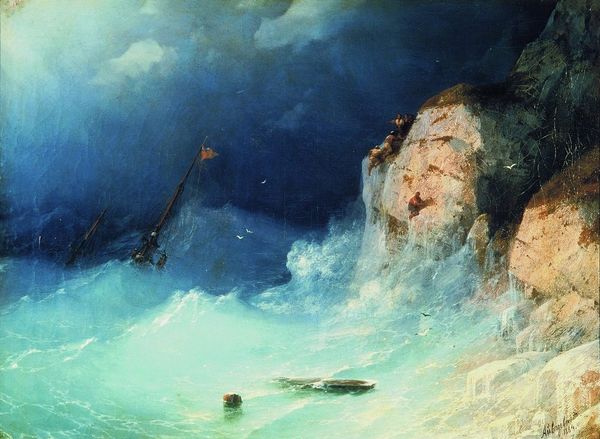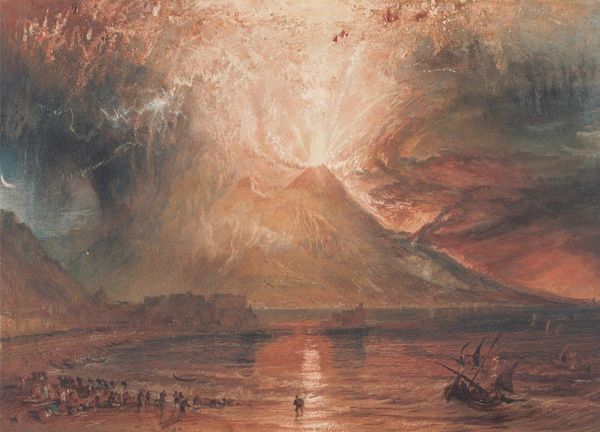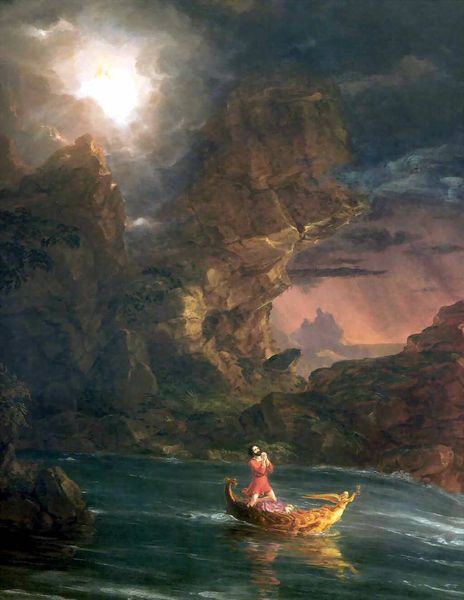
Dimensions: 247 x 369 cm
Copyright: Public domain
Curator: Painted in 1864 by Ivan Aivazovsky, this monumental oil painting is titled *Deluge.* Editor: My initial impression is one of overwhelming chaos. It feels apocalyptic. The way the figures are painted—struggling against this intense backdrop—it really communicates a sense of helplessness. Curator: Absolutely. Water has consistently held symbolic weight across cultures, representing purification, destruction, and the unconscious. In this depiction, we witness the destructive power of the biblical flood, rendered with all the drama typical of Romanticism. The churning water almost feels alive. Editor: The choice of representing the Deluge is so telling, given the sociopolitical landscape of 19th-century Russia. Think about the serf reforms and the unrest brewing amongst the peasant class. Could this be interpreted as a visual metaphor for societal upheaval and divine retribution against oppression? Curator: Interesting perspective. I see the Promethean element too. The tiny figures clinging to rocks can symbolize humanity's struggle for survival, faith against the seemingly insurmountable power of nature. Note the almost unbearable intensity of the light—hope’s beacon, or just the tormenting gaze of God? Editor: The use of light is strategic, no doubt. It emphasizes not just the drama but also the vulnerability of the people. It pushes them to the very front of the space as the land slips out from underneath their feet. It speaks volumes about human precariousness. The Romantic focus on landscape feels radical now, emphasizing individual feelings in an overwhelming universe, which then suggests possibilities for activism in the face of systemic threats. Curator: It is a complex interplay, definitely more than mere illustration. And it invites many views as history unfolds. For some it might also signal a cleansing force. Editor: Right, and isn’t that the challenge, really? Art makes claims—it pushes and pulls, makes no firm commitment in terms of social issues—but the real goal lies beyond interpretation; rather, art's intention remains that viewers generate personal commitment to political urgencies in times of despair. Curator: Absolutely, something here urges a more complete investigation and feeling than mere description can inspire.
Comments
No comments
Be the first to comment and join the conversation on the ultimate creative platform.
